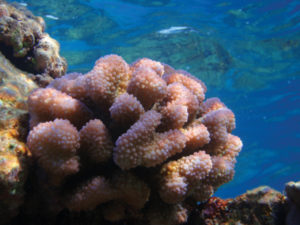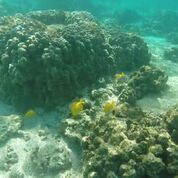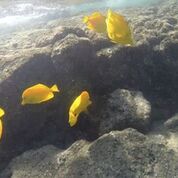
The public is being asked to stay out of Kahalu’u Bay from today through next Saturday. Although the COVID-19 crisis and beach closure has meant there are far fewer people trying to swim, this week is a special week, as this should be the spawning of cauliflower coral (Pocillopora meandrina).
According to the Department of Land and Natural Resources Division of Aquatic Resources (DAR) and the Kahalu‘u Bay Education Center (KBEC), a program of The Kohala Center, cauliflower coral was once abundant on shallow coral reefs along West Hawaiʻi, including Kahaluʻu Bay. However, environment stressors and very high ocean temperatures impacted West Hawaiʻi in 2015 and again in 2019, causing catastrophic bleaching and mortality for more than 90% of the Kahaluʻu Bay population.
Kahalu‘u Bay on Hawai‘i Island is one of the most popular and heavily visited snorkeling locations in all of Hawai‘i. Hundreds of thousands of people come to view colorful fish and dazzling coral colonies every year, and like in many other over-used locations, the aquatic life in the bay is struggling to survive.
KBEC director Cindi Punihaole Kennedy says this week is prime spawning time for the corals, as they only get one chance a year to spawn. “We’re asking everyone to voluntarily avoid snorkeling or swimming in the bay from May 10-16. During broadcast spawning events, corals emit reproductive materials (“gametes”) into the water column and these materials are carried by the tides to mix and generate planktonic coral larvae. Given the chance to settle undisturbed by human activity and/or pollutants, coral gametes will be able to find proper rubble colony areas to settle within the bay.”
Research has shown that it can take less than 24 hours for corals to successfully reproduce and settle properly.
U. S. Fish and Wildlife has posted photos of healthy coral:

State Department of Land and Natural Resources has provided photos of Kahalu’u Bay coral, after the August, 2019 warming events:

